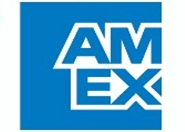Launching a paysite and accepting credit cards: How does it work?

As a neophyte, the task of selecting and integrating a payment processor with one’s website may appear as an insurmountable task, however, with a reliable, knowledgeable, and honest payment processor as your partner, it doesn’t have to be. Even the seasoned business owner and industry veteran can become overwhelmed at the options available in today’s marketspace when it comes to selecting a merchant service provider.
First, we’ll start with the process for a new company launching a new website. Many first-timers make the mistake of putting the cart before the horse and worry too much about hurrying to establishing a merchant account and integrating with the shopping cart and gateway before the website is ready to launch and accept business. Many new business are anxious to check that box on their to-do list however, it needn’t be checked too soon for several reasons. Before getting in bed with a merchant processor, one ought to confirm the compatibility between the shopping cart that has been selected for the website and the gateways offered by the candidates for the role of merchant service provider to ensure the shopping cart is certified to integrate with the gateways available. Too many times I have seen a business owner jump the gun only to learn that the shopping cart isn’t compatible with the gateway which ultimately results in additional cost and time lost to reintegrate with a compatible shopping cart. Another common mistake is securing and integrating the merchant account too soon resulting in “on file” fees which would otherwise be avoided if the merchant account was active and processing sales – most merchant service providers don’t charge an “on file” fee if the account is processing transactions. Don’t establish the merchant account until the site is about 30 days away from being launched. This leaves time for the mandatory Visa and MasterCard registration (for adult content), the underwriting, approval, and integration of the merchant account. This also leaves time to test the payment process to ensure everything runs smoothly and to confirm the descriptor that your customers will see on their billing statement, which is a very important piece in preventing chargebacks.
Second, we’ll discuss the process for a paysite that is already accepting credit cards and is looking to either move their merchant processing or acquire additional processing relationships to help with load balancing, approval ratios, or simply reducing cost by taking advantage of a competitive rate offered by a reliable, knowledgeable, and honest payment processor. If a paysite is already processing credit cards, the integration aspect is already taken care of, which is a time-saver for everyone involved. The only thing that would need to be confirmed is if the existing shopping cart is compatible and already integrated with the gateways on offer by the merchant service provider. The only document that would be required in addition to the documents listed in the next paragraph would be at least three months of processing history to accompany the application package.
Third, we’ll outline the documents that are typically required to open a merchant account in the United States. The documents that typically accompany a completed and signed merchant application are the corporate filings, such as the articles and certificate of incorporation, a voided check for the business, a copy of the photo ID for the signer, and the domain registration information, such as a screenshot or invoice from the domain registrar showing either the name of the company or the individual signing for the merchant account as the registered owner of the domain, if the whois is set to private. If the business is currently accepting credit cards, or has accepted credit cards in the past, three months of processing history should also be included. With these documents, the approval process can begin. The website needs to display certain items in order to be approved, and registered, if applicable. These items are: terms and conditions, privacy policy, refund policy, contact information, and if there is any nudity shown anywhere on the website, the 18 USC 2257 compliance statement. With the exception of the refund policy (which can be a caveat in the terms and conditions), each of the other categories really ought to be displayed on the footer of the site so the information is accessible from anywhere within the domain.
In Europe, it’s a little different, but not terribly so. For a merchant account within the European Union, the following documents are required: Articles of incorporation, certificate of incorporation, shareholder directory, most recent bank statement for the company, copy of the director’s passport, copy of the owner’s passport (if the owner and director are two different people), and a utility bill for the director and owner to prove residency. The website requirements are similar as well with the minor caveat that most European banks require the legal name and address of the company to be listed, at the minimum, in the terms and conditions and on the payment page of the paysite.
Lastly, the integration of the merchant account with the website. A rudimentary outline of the process is something like this: the merchant account details are sent from the bank on what’s colloquially referred to as a “VAR” which is payment-speak for “Value Added Reseller.” This sheet contains unique and crucial account details which the gateway provider uses to establish the gateway account. From there, the gateway typically issues an API key which is used, in conjunction with a few other pieces of information, such as where the request for authorization should be routed, and is inputted into the shopping cart, which is integrated to the paysite by the merchant, or the merchant’s developer. From there, a test transaction should be conducted using a live credit card for $1.00, just to make sure a successful authorization is issued and to confirm both the authorization and settlement descriptors. Once the test transaction is successfully conducted and the descriptors appear satisfactorily, the website is ready to accept live sales!
The task of establishing a merchant account may seem daunting and arduous, but with the right payment service provider by your side, it needn’t be. Before you know it, you’ll be launching site after site, expanding your business, and enhancing your bottom line.
Return to Blog








* Created by
